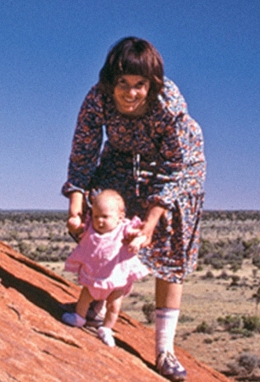
Dingo Ate My Baby: A True Story of Tragedy and Survival
Introduction
In the desolate and unforgiving Australian Outback, a chilling tale unfolded in 1980 that would forever etch itself into the annals of tragedy and survival. The disappearance of nine-week-old Azaria Chamberlain from her family’s tent at Uluru (Ayers Rock) sparked a media frenzy and a bitter legal battle that captivated the nation. The subsequent trial and conviction of her mother, Lindy Chamberlain, for murder sent shockwaves through society and raised profound questions about justice, truth, and the nature of human behavior.
The Disappearance
On the evening of August 17, 1980, the Chamberlain family, consisting of Lindy, her husband Michael, and their three children, set up camp at the Ayers Rock campground. As darkness enveloped the vast expanse, Lindy placed her youngest daughter, Azaria, in a bassinet inside the tent.
Shortly after midnight, Lindy awoke to the sound of a dingo, a wild dog native to Australia, outside the tent. She rushed outside and saw a dingo running away with something in its mouth. Panic surged through her as she realized that it was Azaria.
The Search and Investigation
A desperate search ensued, involving hundreds of volunteers and police officers. However, no trace of Azaria could be found. The only evidence was a small piece of her jumpsuit, which was discovered near the campsite.
The police initially suspected foul play, but the lack of physical evidence made it difficult to build a case against the Chamberlains. However, the media and public opinion quickly turned against them, fueled by sensationalist headlines and rumors.
The Trial and Conviction
In 1982, Lindy Chamberlain was charged with murder. The prosecution alleged that she had killed Azaria and disposed of her body in the Outback. The trial was a media circus, with every detail of the case dissected and scrutinized.
The prosecution’s case rested heavily on circumstantial evidence, including the lack of a dingo attack on record at Uluru and the presence of blood in the Chamberlains’ car. However, the defense presented expert testimony that supported the possibility of a dingo attack and challenged the reliability of the blood evidence.
Despite the lack of conclusive evidence, the jury found Lindy Chamberlain guilty of murder. She was sentenced to life imprisonment.
The Appeal and Exoneration
Lindy Chamberlain’s conviction sparked widespread outrage and disbelief. A public outcry ensued, and a campaign for her release gained momentum.
In 1986, a new piece of evidence emerged: a dingo skull with human blood on it was found near the campsite. This discovery cast doubt on the prosecution’s case and led to a retrial.
In 1988, Lindy Chamberlain was acquitted of all charges. The court found that there was insufficient evidence to prove that she had killed her daughter.
The Aftermath
The Dingo Ate My Baby case left an enduring legacy on Australian society. It exposed the flaws in the justice system and the dangers of media sensationalism. It also raised important questions about the nature of truth and the limits of human knowledge.
Lindy Chamberlain’s ordeal had a profound impact on her life. She spent four years in prison for a crime she did not commit. After her release, she became an advocate for the wrongfully convicted and a voice for victims of injustice.
The Dingo Theory
The most widely accepted explanation for Azaria Chamberlain’s disappearance is that she was taken by a dingo. Dingoes are known to attack and kill small children, and there have been several other cases of dingo attacks in Australia.
However, some people believe that Lindy Chamberlain was responsible for her daughter’s death. They argue that the evidence against her was strong and that she had a motive to kill Azaria.
Conclusion
The Dingo Ate My Baby case remains one of the most controversial and fascinating true crime stories in Australian history. It is a tale of tragedy, injustice, and the enduring power of the human spirit.
While the exact truth about what happened to Azaria Chamberlain may never be known, the case serves as a reminder of the importance of due process, the dangers of prejudice, and the resilience of those who have been wronged.
